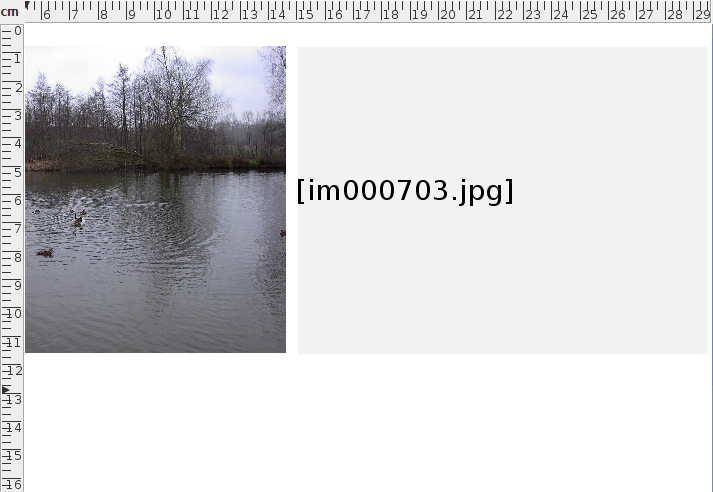Bitmaps
FlowframTk is primarily a vector graphics application, however it is possible to insert a raster graphics image (bitmap) into your picture for background effects or if you want to annotate a bitmap (as was done in Figure 6.6 in the previous section). Note that FlowframTk does not save the actual raster graphics data in either the JDR or the AJR file, but instead it creates a link to the original file. You can't edit the actual bitmap data in FlowframTk. However you can scale, rotate or shear the link. If you change the location of the file containing the bitmap, when FlowframTk reloads the JDR or AJR file it will prompt you for the new location or discard the link.
If you use another application to edit the bitmap whilst you have a picture with a link to it displayed in FlowframTk, you will need to select Bitmap->Refresh to update the image.
To insert a bitmap into your picture, first make sure you are using the select tool (and no shapes are being edited or distorted), and then select the menu item Bitmap->Insert Bitmap and a dialog box will appear in which you can choose the required bitmap. The bitmap will initially appear in the top left hand corner of the canvas but can be moved to a new location. If your operating system supports drag and drop, you can also drag a bitmap file onto the canvas (in select mode) and it will be inserted at the drop location.
If there is insufficient memory in the JRE to load a bitmap, FlowframTk will revert to draft mode to display that bitmap. For example, in Figure 7.1 several photos have been inserted into an image. Since photos tend to be quite large, there is insufficient memory to load the final photo, so it is displayed in draft mode instead. Note that draft mode will also be used when printing or when exporting to PNG. Since LaTeX files only contain a link to the bitmap, draft mode should not affect exporting to LaTeX files or to formats that use latex or pdflatex as an intermediate step.
Note that the amount of memory available to any Java application is set at startup. The default maximum value is usually around 64Mb but can be changed via the JRE command line options. If you run FlowframTk from the shell script flowframtk, then you can set the environment variable JDR_JVMOPTS to change the default configuration. See Command Line Arguments for further details. If you are running FlowframTk from Windows, you will need to check the JRE documentation.

